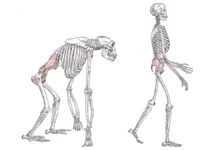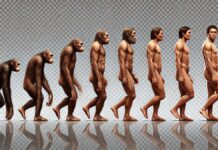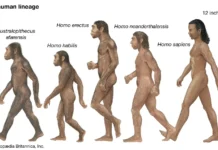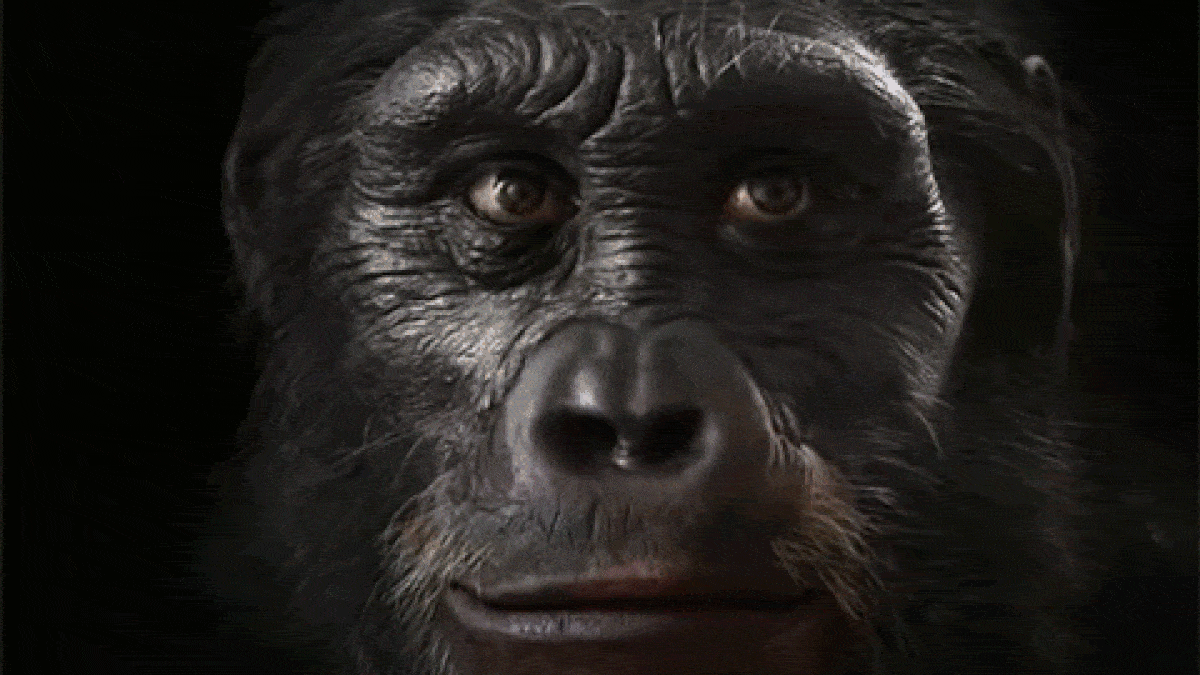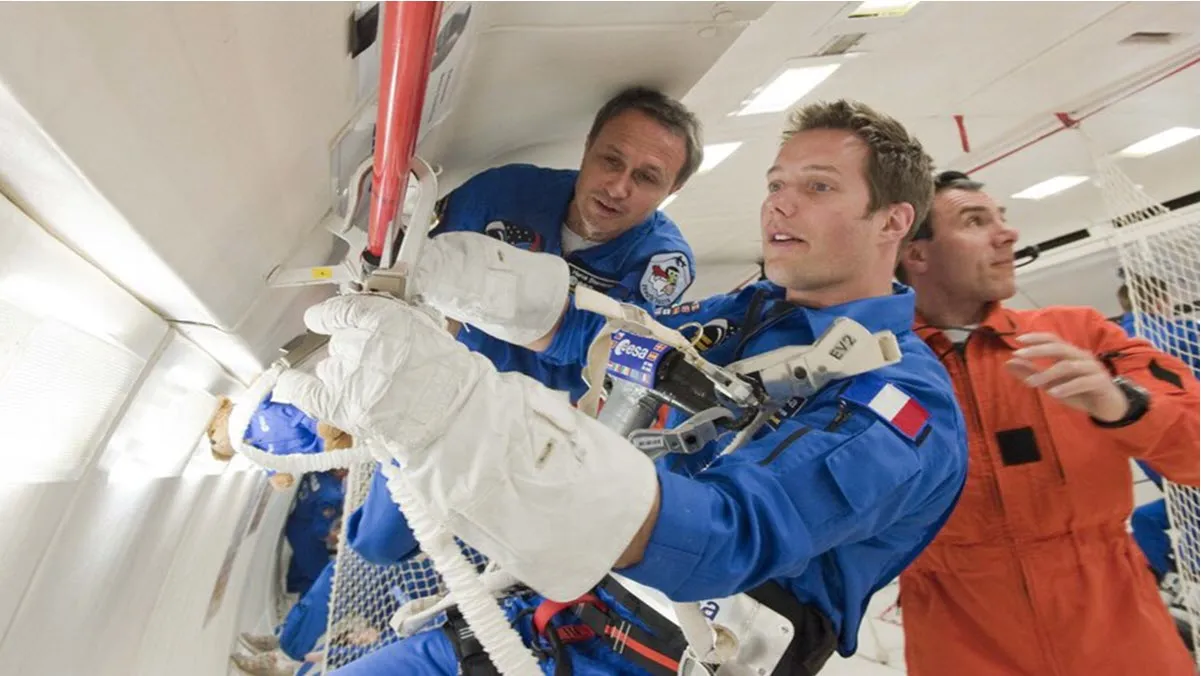Introduction: Unveiling the Psoas Muscle
The human body holds a treasure trove of stories whispered through its very structure. One such story lies within the psoas muscle, a deep core muscle often referred to as the “muscle of the soul”. Tucked away in the lower back and hip, the psoas plays a vital role in our posture, stability, and movement. But its significance extends far beyond the present.
This exploration delves into the fascinating world of the psoas, uncovering its evolutionary journey. We’ll travel back in time to understand how bipedalism, the defining characteristic of human locomotion, fundamentally reshaped this muscle. We’ll see how the psoas transformed from a primary hip flexor in our quadrupedal ancestors to a core stabilizer crucial for our upright posture today.
This journey isn’t just about the past; it illuminates the psoas’s role in our modern lives. We’ll delve into the challenges posed by our often sedentary lifestyles and how a dysfunctional psoas can contribute to various issues. Finally, we’ll equip you with the knowledge and practices to cultivate a healthy psoas, ensuring optimal core stability, flexibility, and movement patterns.
So, join us as we unveil the psoas – a bridge between our evolutionary past and our present movement needs. Let’s unlock the secrets held within this remarkable muscle and discover how to keep it functioning at its best.
The Transformation of the Psoas Muscle During Bipedalism
The transformation of the psoas muscle during the transition to bipedalism is a fascinating aspect of human evolution. The psoas major is a deep-seated muscle that originates from the lumbar vertebrae and inserts into the lesser trochanter of the femur. It plays a crucial role in flexing the hip joint and stabilizing the spine.
As our ancestors transitioned from quadrupedal to bipedal locomotion, several changes likely occurred in the psoas muscle to accommodate this shift:
Change in Function
The transition to bipedalism indeed led to significant changes in the function of various muscles, including the psoas muscle. In quadrupeds, like many other mammals, the psoas major primarily acts as a stabilizer of the trunk during movement, especially in activities like running or climbing. However, with the evolution of bipedalism in humans, the demands on the psoas muscle shifted dramatically.
In bipedal locomotion, the psoas muscle takes on a crucial role in hip flexion, which is vital for walking, running, and maintaining balance. This shift in function reflects the adaptation to the upright posture and the biomechanical demands of walking on two legs. It’s fascinating how anatomical structures can evolve to accommodate such significant changes in locomotion, highlighting the intricate relationship between form and function in evolutionary biology.
Repositioning
the repositioning of the pelvis and spine during the transition to bipedalism would indeed have profound effects on the orientation and attachment points of the psoas muscle. As the pelvis rotated forward and the spine became more vertically oriented, the angle of the muscle fibers and the length of the psoas muscle would likely have undergone significant changes to adapt to these new biomechanical demands.
In quadrupeds, where the spine is more horizontal and the pelvis is positioned differently, the psoas muscle has a different orientation and attachment points compared to humans. With the shift to bipedalism, the psoas muscle would have had to reposition itself to better facilitate hip flexion while also maintaining stability and support for the upright posture.
These alterations in muscle orientation and attachment points would represent adaptations to optimize the efficiency and effectiveness of bipedal locomotion, highlighting the remarkable plasticity of musculoskeletal structures in response to evolutionary pressures.
Adaptation to Upright Posture
the transition to bipedalism required significant adaptations in various muscle groups, including the psoas muscle, to support the upright posture characteristic of walking and running on two legs.
One crucial adaptation would involve changes in muscle strength to support the increased load-bearing demands of bipedal locomotion. The psoas muscle, which is involved in hip flexion and stabilization of the trunk, would have needed to develop greater strength to support the body’s weight and facilitate movement while walking and running.
Endurance would also be essential for the psoas muscle in maintaining stability and balance over extended periods of walking or running. Unlike quadrupedal locomotion, where the weight is distributed among four limbs, bipedal locomotion places greater demands on specific muscle groups, including the psoas, to sustain activity over longer durations.
Furthermore, coordination among various muscle groups, including the psoas, would be crucial for maintaining balance and stability during bipedal locomotion. The psoas muscle must work in harmony with other muscles around the hip and core to ensure smooth and efficient movement while walking or running.
Overall, the adaptations of the psoas muscle to support the upright posture of bipedalism reflect the intricate interplay between musculoskeletal structures and the demands of locomotion in evolutionary biology.
Shift in Load Bearing
In quadrupeds, the psoas muscle primarily acts as a stabilizer of the trunk during locomotion, with the weight of the body distributed among four limbs.
However, in bipedal humans, the psoas muscle must adapt to support a greater portion of the body’s weight, especially during activities like standing, walking, and running. This increased load-bearing function requires the psoas muscle to develop greater strength and endurance to withstand the forces generated by bipedal movement.
Additionally, bipedal locomotion introduces new challenges in terms of stability and balance, as the body’s center of mass shifts with each step. The psoas muscle plays a crucial role in maintaining pelvic stability and controlling the movement of the hip joint, thereby helping to absorb and distribute the forces generated during walking and running.
The adaptation of the psoas muscle to these different mechanical demands highlights the remarkable plasticity of musculoskeletal structures in response to changes in locomotion patterns and posture throughout human evolution.
Integration with Other Muscles
Integration with other muscles, such as the iliacus and the muscles of the hip and core, would be crucial for efficient coordination and movement during bipedal locomotion. These muscles work together to stabilize the pelvis, control the movement of the hip joint, and maintain balance while walking or running on two legs.
Connective tissues, including ligaments and tendons, would also undergo adaptations to support the new biomechanical demands of bipedalism. These tissues help to transmit forces between muscles and bones, providing stability and preventing injury during movement.
Furthermore, the nervous system plays a vital role in coordinating the actions of various muscles and ensuring smooth and efficient movement. The adaptation of the psoas muscle to bipedalism would involve changes in neural control and coordination to integrate its function with that of other muscles involved in upright posture and locomotion.
Overall, the transition to bipedalism required a coordinated evolution of multiple musculoskeletal structures to support the biomechanical demands of walking and running on two legs. These adaptations reflect the remarkable versatility and adaptability of the human musculoskeletal system in response to changes in locomotion patterns and posture throughout evolution.
Comparative Anatomy: Exploring the Differences in Psoas Muscle Structure Between Quadrupeds and Bipedal Humans
The psoas muscle, a vital component of the human musculoskeletal system, undergoes significant structural and functional changes as our species transitioned from quadrupedal ancestors to bipedal humans. Understanding these differences sheds light on the evolutionary adaptations that enabled human bipedalism and highlights the unique features of our musculature compared to other mammals.
Anatomy of the Psoas Muscle in Quadrupeds
In quadrupeds, such as non-human primates and other mammals, the psoas muscle plays a crucial role in stabilizing the trunk and facilitating movement across all fours. The muscle originates from the lumbar vertebrae and extends down through the pelvis before inserting onto the femur. Its primary functions include hip flexion and stabilizing the spine during locomotion.
The psoas muscle in quadrupeds typically exhibits robust development, reflecting the demands of supporting the body’s weight and generating power for forward propulsion while moving on all fours. Its attachment points and muscle fiber orientation are optimized for quadrupedal locomotion, providing stability and strength during activities such as climbing, running, and jumping.
Adaptations in Bipedal Humans
In contrast, the psoas muscle in bipedal humans undergoes notable adaptations to accommodate the shift from quadrupedal to bipedal locomotion. As our ancestors began walking upright, the demands on the psoas muscle changed significantly, leading to structural and functional modifications.
One of the most apparent differences lies in the orientation of the psoas muscle fibers. In bipedal humans, the muscle fibers may be more vertically aligned compared to the more horizontally oriented fibers seen in quadrupeds. This reorientation optimizes the muscle for hip flexion, a critical component of bipedal walking and running.
Additionally, the attachment points of the psoas muscle may undergo subtle changes in bipedal humans to better support the upright posture and movements associated with walking on two legs. The muscle’s connection to the lumbar vertebrae and pelvis may be modified to enhance stability and efficiency during bipedal locomotion.
Muscle fiber type
Beyond the changes in function and positioning, the psoas muscle also likely underwent adaptations in its fiber type composition to meet the demands of bipedalism. In our quadrupedal ancestors, the psoas muscle probably contained a higher percentage of slow-twitch muscle fibers. These fibers are known for their excellent endurance, allowing for sustained activity during movements like walking or climbing on all fours.
However, with the shift to bipedalism, the demands placed on the psoas muscle changed dramatically. Bipedal walking and running require powerful bursts of hip flexion for propulsion with each stride. This shift in function likely favored a change in the psoas muscle fiber type composition. The muscle may have developed a greater proportion of fast-twitch muscle fibers. These fibers are designed for generating short, powerful contractions, ideal for the explosive movements involved in bipedal gait.
This adaptation in muscle fiber type highlights the remarkable plasticity of muscle tissue. In response to the evolutionary pressures of bipedalism, the psoas muscle not only changed its function and positioning but also its very composition to better serve the needs of upright posture and locomotion.
Range of motion
The transformation of the psoas muscle during bipedalism wasn’t just about strength and endurance; it also involved a potential trade-off in range of motion. In our quadrupedal ancestors, the psoas muscle likely had a wider range of hip flexion. This flexibility was crucial for activities like climbing and navigating uneven terrain, allowing for a greater range of movement at the hip joint.
However, with the transition to bipedalism, the emphasis shifted towards stability for maintaining an upright posture. This may have resulted in a slight reduction in the psoas muscle’s range of motion. While still capable of generating powerful hip flexion for walking and running, the muscle might have sacrificed some of its extreme flexion capabilities seen in quadrupeds.
This trade-off reflects the body’s prioritization of stability when adopting a new form of locomotion. While a broader range of hip flexion might be advantageous for climbing trees, it’s less crucial for the efficient and balanced walking and running patterns characteristic of bipedalism.
Neural control
The transformation of the psoas muscle during bipedalism wasn’t solely about anatomical adaptations. It likely involved significant changes in the nervous system, the conductor that orchestrates the symphony of muscle movements. Bipedal gait, with its complex sequence of leg movements and core stabilization, requires intricate coordination between various muscle groups, including the psoas. Here’s how the nervous system might have played a role in optimizing the psoas muscle’s function:
List how the nervous system might have played a role
- Enhanced Neuromuscular Control: Bipedalism may have driven the development of more refined neural pathways dedicated to controlling the psoas muscle. This would allow for precise timing and intensity of activation, ensuring efficient hip flexion during each stride and optimal interaction with other muscles involved in gait mechanics.
- Improved Proprioception: Proprioception refers to our body’s awareness of its position and movement in space. The nervous system likely enhanced the psoas muscle’s proprioceptive capabilities to provide real-time feedback on its position and tension. This information is crucial for maintaining balance and stability during bipedal movement.
- Refined Motor Learning: The transition to bipedalism likely involved a significant period of motor learning. As our ancestors honed their walking and running skills, the nervous system would have adapted to optimize communication with the psoas muscle and integrate it seamlessly into coordinated movement patterns.
- Integration with Balance Systems: The cerebellum, a key part of the brain involved in balance and coordination, might have strengthened its connection with the neural pathways controlling the psoas muscle. This would allow for continuous adjustments in muscle activation to maintain balance and posture during bipedal activities.
- Reduced Antagonistic Inhibition: The nervous system might have reduced the inhibitory influence on the psoas muscle from its antagonistic muscles (such as the hamstrings). This would allow for smoother coordination and more efficient activation of the psoas during hip flexion movements.
- Enhanced Synergistic Facilitation: Conversely, the nervous system might have strengthened the facilitatory connections between the psoas muscle and its synergistic muscles (like the iliacus). This would allow for more coordinated and powerful hip flexion during activities like walking and running.
- Refined Sensory Processing: The nervous system might have improved its ability to process sensory information from the psoas muscle and surrounding tissues. This would allow for better real-time adjustments in muscle activation based on factors like joint position, ground reaction forces, and overall body mechanics.
- Adapting to Spinal Reflexes: Bipedalism might have led to modifications in spinal reflexes that involve the psoas muscle. These reflexes play a crucial role in maintaining postural adjustments and ensuring stability during movement.
- Cortical Reorganization: The cerebral cortex, the part of the brain responsible for higher-level motor control, likely underwent some degree of reorganization to accommodate the demands of bipedal gait. This could have involved strengthening the neural pathways specifically dedicated to controlling the psoas muscle for coordinated movement.
- Anticipatory Control: The nervous system might have developed the ability to anticipate upcoming movements and activate the psoas muscle pre-emptively. This would allow for smoother transitions between different gait phases and improved efficiency during walking and running.
- Descending Motor Drive: The descending motor pathways, which carry signals from the brain to the spinal cord and ultimately to the muscles, might have become more fine-tuned to control the psoas muscle with greater precision. This would ensure optimal force generation and timing of muscle activation during various bipedal activities.
- Postural Control Networks: The nervous system might have strengthened the connections between the psoas muscle and brain networks responsible for postural control. This would allow for better integration of the psoas muscle into the overall postural control system, crucial for maintaining an upright posture during bipedalism.
- Learning and Plasticity: The nervous system’s remarkable ability to learn and adapt likely played a key role in optimizing the psoas muscle function. As our ancestors practiced bipedal gait, the nervous system would have continuously refined its control and coordination strategies to ensure efficient movement patterns.
- Variability and Adaptation: The nervous system might have developed the ability to adjust its control of the psoas muscle based on different terrains and movement demands. This would allow for adaptability and efficient movement patterns on various walking or running surfaces.
- Descending Pain Modulation: The nervous system could have enhanced its ability to modulate pain signals arising from the psoas muscle. This would have been crucial during the initial stages of bipedalism, allowing individuals to tolerate the increased demands placed on the muscle without significant discomfort that might hinder gait development.
- Fatigue Resistance Mechanisms: The nervous system might have implemented strategies to enhance the psoas muscle’s resistance to fatigue. This could involve improved recruitment patterns, optimizing muscle fiber activation to minimize fatigue during prolonged walking or running.
- Emotional Regulation: While seemingly unrelated, the nervous system’s influence on emotional state might have played a role. Bipedalism could have triggered anxieties or challenges with balance initially. The nervous system might have adjusted psoas muscle activation to promote feelings of stability and confidence during movement, aiding in the adoption of bipedalism.
- Visceral Integration: The nervous system might have strengthened connections between the psoas muscle and the autonomic nervous system, which regulates involuntary functions. This could have improved coordination between breathing patterns, core stability, and psoas muscle activation during bipedal gait.
- Sensory Integration from Other Systems: Beyond proprioception, the nervous system might have enhanced its ability to integrate sensory information from other systems like the vestibular system (balance) and visual system (spatial awareness). This would provide the psoas muscle with a more comprehensive picture of body position and movement in space, leading to more refined motor control.
- Motor Pattern Sequencing: The cerebellum, responsible for motor learning and coordination, might have played a significant role in establishing efficient motor patterns for bipedal gait. This would involve precise timing and sequencing of psoas muscle activation alongside other leg and core muscles for smooth and coordinated walking and running.
- Internal Model Development: The nervous system might have developed an “internal model” of the psoas muscle’s function and interaction with other structures during bipedal movement. This internal model would allow for real-time adjustments in muscle activation based on ongoing sensory feedback, ensuring optimal movement efficiency.
- Mirroring and Social Learning: Early bipedal gait might have benefited from social learning and mirroring behaviors. The nervous system could have been more receptive to observing and mimicking the psoas muscle activation patterns of successful bipedal walkers, accelerating the learning process.
- Genetic Predisposition: While the nervous system adapts throughout life, some studies suggest a possible genetic predisposition for efficient bipedalism. This could involve pre-existing neural pathways or adaptations that facilitated the nervous system’s optimization of the psoas muscle function during the evolutionary shift.
- Developmental Plasticity: The nervous system exhibits remarkable plasticity, especially during early development. Bipedalism likely emerged during a period of high developmental plasticity, allowing the nervous system to adapt more readily to the demands of controlling the psoas muscle for efficient bipedal movement.
- Mirror Neuron System and Observational Learning: Beyond simple mirroring, the nervous system’s mirror neuron system might have played a role in accelerating the learning process for bipedalism. Observing successful bipedal walkers could have stimulated the mirror neuron system, promoting the development of similar neural pathways for controlling the psoas muscle in the observer.
- Nociceptive Modulation and Injury Prevention: The nervous system might have enhanced its ability to modulate nociceptive (pain) signals arising from the psoas muscle during the initial stages of bipedalism. This would have allowed individuals to tolerate the increased demands placed on the muscle while still facilitating essential movement and learning for bipedal gait development.
- Reward Systems and Reinforcement Learning: The nervous system’s reward system could have played a role in reinforcing successful bipedal movements that involved efficient psoas muscle activation. This positive reinforcement loop might have accelerated the learning and refinement of motor patterns crucial for bipedalism.
- Neuroplasticity and Environmental Influence: The remarkable neuroplasticity of the nervous system likely played a crucial role. As early bipedal walkers encountered different terrains and challenges, the nervous system could continuously adapt its control of the psoas muscle to optimize movement patterns for various environmental demands.
- Interhemispheric Communication: Bipedalism requires coordinated movement between the right and left legs. The nervous system might have strengthened the communication pathways between the brain hemispheres, ensuring seamless coordination of the psoas muscle on both sides of the body for efficient walking and running.
Functional Implications
These structural adaptations in the psoas muscle have functional implications for bipedal humans. The muscle’s reconfigured orientation and attachment points contribute to the efficient generation of power and stability during activities such as walking, running, and standing.
Moreover, the psoas muscle’s role in spinal stability becomes even more pronounced in bipedal humans, where maintaining an upright posture places increased demands on the musculature supporting the spine. The psoas muscle works in concert with other muscles of the core and lower limbs to stabilize the spine and pelvis, allowing for smooth and coordinated movement in various planes of motion.
The Psoas Muscle in Early Hominins: Insights from Fossil Evidence and Comparative Anatomy
Studying the psoas muscle in early hominins provides valuable insights into the evolution of bipedalism and its impact on locomotor anatomy. While direct evidence of soft tissue like muscles is rarely preserved in the fossil record, researchers can infer aspects of early hominin musculature through comparative anatomy, biomechanical modeling, and analysis of bony landmarks. Here are some insights gleaned from fossil evidence and comparative anatomy regarding the psoas muscle in early hominins:
List of insights
- Pelvic Anatomy: The shape and orientation of the pelvis in early hominins offer clues about the position and function of the psoas muscle. Changes in pelvic morphology, such as the evolution of a shorter and broader pelvis with a more bowl-like shape, suggest adaptations for bipedalism and alterations in muscle attachment points, including those of the psoas muscle.
- Lumbar Vertebrae: Examination of lumbar vertebrae in early hominin fossils provides information about the size and shape of the spinal canal, which can indicate the relative size and development of the psoas muscle. Changes in vertebral morphology, such as the presence of lumbar lordosis and adaptations for weight-bearing, suggest modifications in the psoas muscle to support upright posture and locomotion.
- Femoral Anatomy: Analysis of femoral morphology in early hominins can shed light on the mechanics of hip joint function and the role of muscles like the psoas in bipedal locomotion. Features such as the angle of the femoral neck and the shape of the proximal femur may reflect adaptations for efficient hip flexion and stability during walking and running.
- Comparative Anatomy with Extant Primates: Comparative studies with living primates, especially those that exhibit variations in locomotor behavior (e.g., chimpanzees, gorillas, orangutans), provide insights into the evolutionary changes in psoas muscle anatomy associated with bipedalism. Contrasts in muscle attachment sites, fiber orientation, and relative muscle size can inform hypotheses about the functional adaptations of the psoas muscle in early hominins.
- Biomechanical Modeling: Computational modeling and simulations based on fossil anatomy and modern human musculature can help reconstruct the probable function of the psoas muscle in early hominins. By integrating data from fossil specimens with biomechanical principles, researchers can infer how changes in pelvic and spinal anatomy influenced the biomechanics of bipedal locomotion and the role of muscles like the psoas.
- Hominin Footprints: Analysis of fossilized footprints can provide indirect evidence of bipedal locomotion and its impact on muscle function, including the psoas muscle. By studying the depth, spacing, and orientation of footprints, researchers can infer aspects of gait and posture, which in turn inform hypotheses about muscle use during walking and running.
- Muscle Scarring on Bones: Examination of bony surfaces for muscle attachment sites, such as muscle scars and rugosities, can offer insights into the relative development and size of muscles like the psoas in early hominins. Patterns of muscle scarring may reflect adaptations for specific locomotor behaviors and postures.
- Biomechanical Analysis of Fossil Limb Bones: Biomechanical studies of fossil limb bones, particularly those of the pelvis and femur, can provide information about the forces experienced during bipedal locomotion and the corresponding muscle activity, including that of the psoas muscle. Finite element analysis and other modeling techniques help researchers infer muscle function based on skeletal morphology and loading patterns.
- Comparative Studies with Living Primates: Comparative anatomy and behavioral studies of living primates offer valuable insights into the evolutionary changes in muscle function associated with bipedalism. By examining differences in muscle anatomy and activity between bipedal and quadrupedal primates, researchers can infer the adaptive significance of psoas muscle modifications in early hominins.
- Functional Morphology: Functional morphology investigates how the form of anatomical structures relates to their function. By analyzing the shape, size, and orientation of bones and muscles in fossil hominins, researchers can infer the mechanical demands placed on muscles like the psoas during bipedal locomotion and other activities.
- Paleoecological Context: Understanding the environmental context in which early hominins lived provides important clues about their locomotor behaviors and associated muscle adaptations. By reconstructing paleoenvironments and studying the behaviors of contemporary animals, researchers can make inferences about the locomotor repertoire and muscle use in early hominins, including the psoas muscle.
- Cultural Practices: Anthropological evidence of cultural practices, such as tool use, hunting, and gathering, can offer insights into the types of activities early hominins engaged in and the corresponding muscle adaptations. Changes in tool technology and subsistence strategies may have influenced the demands placed on muscles like the psoas.
- Paleoanthropological Sites: Excavation of archaeological sites and the recovery of fossil remains provide valuable opportunities to study the skeletal anatomy and associated musculature of early hominins. By analyzing the spatial distribution of fossils and associated artifacts, researchers can reconstruct patterns of mobility and muscle use in ancient human populations.
- Isotopic Analysis: Isotopic analysis of fossilized bones and teeth can provide information about the diet and feeding behaviors of early hominins, which in turn informs hypotheses about muscle adaptations. Changes in diet and food processing techniques may have influenced the energy requirements and muscle function of hominins, including the psoas muscle.
- Experimental Studies: Experimental studies, including biomechanical experiments and muscle electromyography (EMG) studies in living humans and non-human primates, can provide direct data on muscle function during bipedal locomotion. By comparing muscle activity patterns and mechanics between bipedal and quadrupedal locomotion, researchers can infer the role of muscles like the psoas in early hominin locomotion.
Conclusion: A Symphony of Muscle, Nerve, and Evolution
The transformation of the psoas muscle during bipedalism is a fascinating story etched within our very anatomy. It’s a testament to the remarkable adaptability of the human body and the intricate relationship between form and function in evolution.
This exploration has delved into the significant changes the psoas muscle underwent, from its role in quadrupedal locomotion to its crucial function in supporting our upright posture and bipedal gait. We’ve seen how the muscle’s orientation, fiber type composition, and even the nervous system’s control strategy have all adapted to meet the demands of walking on two legs.
Understanding these adaptations not only sheds light on our evolutionary journey but also holds significant implications for our present lives. A dysfunctional psoas muscle can contribute to various postural and movement issues. By appreciating the psoas muscle’s role in bipedalism, we can develop targeted exercises and movement practices to cultivate a healthy psoas, ensuring optimal core stability, flexibility, and efficient movement patterns.
The story of the psoas muscle is far from over. As we continue to explore the intricate workings of the human body and delve deeper into our evolutionary past, we gain a greater appreciation for the remarkable symphony of muscle, nerve, and environment that has shaped us into who we are today.
References
- Revision of hip flexor anatomy and function in modern humans, and implications for the evolution of hominin bipedalismJC Sedlmayr, KT Bates, JJ Wisco… – The Anatomical …, 2022 – Wiley Online Library… a conjoint iliopsoas muscle tendon; … the evolution of human gait and locomotor behavior.First, models demonstrate the importance of these muscles in the evolution of a habitual bipedal …
- Evolution of the human hip. Part 2: muscling the double extensionT Hogervorst, EE Vereecke – Journal of hip preservation surgery, 2015 – academic.oup.com… that the suite of adaptations for obligate bipedality evolved in a relatively short time span. …arthroplasty) have groin pain when testing the iliopsoas. Thus, iliopsoas pain can persist or …
- Evolution of human walkingCO Lovejoy – Scientific American, 1988 – JSTOR… The iliopsoas, a muscle that originates within the pelvis and ex tends … the muscle’s course in the human pelvis. In one respect Lucy seems to have been even better designed for bipedal …
- The psoas major muscle is essential for bipedal walking–An analysis using a novel upright bipedal-walking android modelK Sanaka, KHashimoto, D Kurosawa, E Murakami… – Gait & Posture, 2022 – Elsevier… Bipedalism is a function acquired during the evolution from apes to humans, during whichthe skeleton and its function altered to adapt to differences in gait pattern [1], [2]. Various …
- Evolutionary aspects and muscular properties of the trunk—implications for human low back pain N Schilling, D Arnold, H Wagner, MS Fischer – Pathophysiology, 2005 – Elsevier… , which also contained a very high percentage of glycolytic fibres, the psoas muscles are …posture with a bipedal mode of locomotion. This bipedal mode of locomotion evolved more than …
- S Agichani, Y Sontakke, SS Joshi… – … Evolution Med Dent Sci, 2013 – academia.edu… being required in bipedal, plantigrade man the muscle has receded during evolution; hence… Apart from racial variations, a large number of morphological variations of this muscle have …
- Evolution of the human hip. Part 1: the osseous frameworT Hogervorst, EE Vereecke – Journal of hip preservation surgery, 2014 – academic.oup.com… Although the debate on evolutionary mechanisms leading to a habitual upright bipedal gait is ongoing, once en route to bipedality, evolutionary mechanisms likely favoured energetic …
- Functions and evolution of hominid hip and thigh musculature BA Sigmon – Primate functional morphology and evolution, 1975 – degruyter.com … evolution of erect bipedalism in man. If one regards the ape grade of organization as representative of an early evolutionary … in the evolution of the hominid pattern of bipedal …



